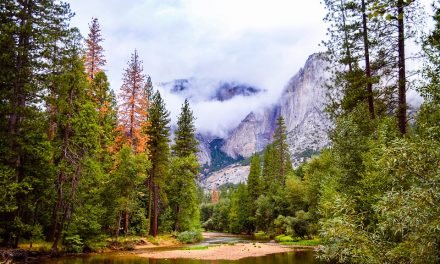On its face, choosing where to camp in Utah seems like a simple question: would you rather have a perfect day in the mountains or a perfect day in the desert? But once you start poring over maps and looking at options, you’ll quickly realize the number of choices is completely overwhelming. It’s not a bad problem to have. Utah has got it all. Scenic lakes, forested mountains, desert canyons, sand dunes, and amazing rivers are all on the table.
So the big question is how to choose? The best way to start is by reviewing some options. We’ve compiled a handy list to help you with your search.
Utah Camping Tips
To get started, let’s look at some general tips for Utah camping across the board. Before setting out, whether you’re in an RV, a tent, or on foot, you should consider these things.
Water
The availability of water is always a huge issue in the West, especially once you cross over into the high desert of Southern Utah. If you’re camping at a primitive site, find out whether water is available where you’re going. Having to turn around and go looking for a gas station just as you get settled can be a huge bummer.
If there isn’t potable water available, be sure you have the means to purify it. And if there’s none at all, be sure to bring more than you need. If you’re backpacking, the best bet is to plan a trip that includes at least one body of water along the way. Packing it all with you can be a massive burden and hinder your progress.
Maps and Land Usage
Like many states in the west, Utah has a wealth of public land. The Bureau of Land Management oversees 22.9 million acres in the state, roughly 42 percent of the total land in Utah. Add to this 8.2 million acres of National Forest land and two million acres of National Parks and Monuments and you’ll arrive at a number that is absolutely astounding – 60.9% of the land in Utah is open to the public.
But knowing where to go, and what restrictions are in place can still be tricky to navigate. Luckily, there are plenty of resources available. The BLM (Bureau of Land Management) offers a lot of good interactive maps of the state to help you know before you go. Publiclands.org has a similar interactive planning tool. Calling ahead to whatever agency manages the place you plan on going is also a good idea.
Leave No Trace
Regardless of your destination, it’s always important to be responsible and to observe the Leave No Trace Code of Ethics. This is especially important in the red rock desert, where it’s easy to cause long-term damage to fragile ecosystems. Remember to camp on durable surfaces, pack out your waste, minimize campfire impacts, respect wildlife, and never take what you find home with you.
In the desert, this means hiking over, and camping on rock whenever possible. It’s good practice to only use fire rings that are already present, and make sure your fire is dead out when you leave. In some cases, packing out your “waste” means both trash and human waste. Observe whichever rule applies to where you plan on going.
Wildlife can also be a concern across the state, as deer, elk, bear, moose, cougars, bighorn sheep, mountain goats, coyotes, foxes, and other animals are common throughout. Remember to keep your distance and be respectful.
Lastly, there are remnants of ancient peoples throughout the Southwest, from rock art to pottery and dwellings. The things they left behind make the landscape a much richer, more interesting one. Observe what you see and leave it as it is, always. Remember: we go to the wilderness to appreciate it for what it is. Don’t change it.
Best Tent Camping Locations
#1 – Lake Blanche (Wasatch Mountains)
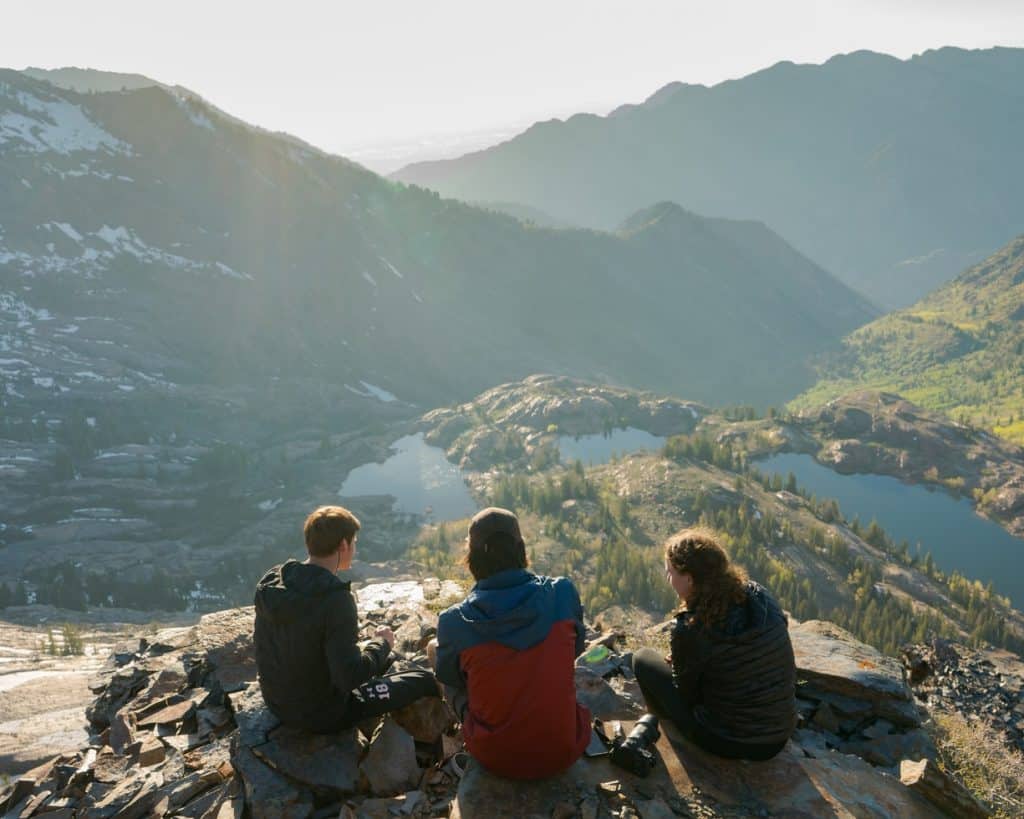
Lake Blanche is the most photographed lake in Utah, and for good reason. It’s a short drive up Big Cottonwood Canyon from Salt Lake City, making it very accessible. The trail is 6.9 miles out and back, allowing for a quick overnight backpack. And the payoff is wonderful. The lake sits cradled in a picturesque alpine valley, surrounded by peaks and smooth granite. Lake Blanche is some of the best bang for your buck you can get in the Wasatch.
#2 – Mirror Lake Highway (Uinta Mountains)
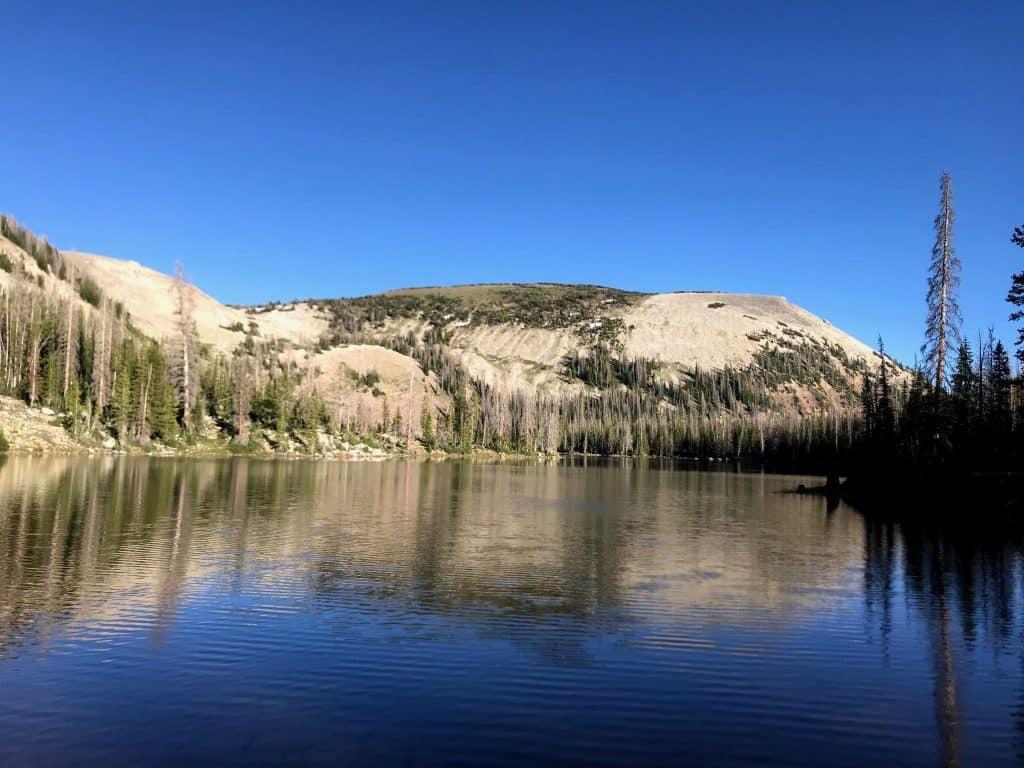
The Uinta Mountains hold a million possibilities, but if you’re new to the area, a good bet is to venture off of the Mirror Lake Highway (Hwy 150) and find yourself a good lake. There are over 1000 lakes in total across the range, guaranteeing you’ll find a little place to have all to yourself. Most are easily accessible, some require high clearance or 4WD. But all of them are sure to knock your socks off.
#3 – Sand Flats Recreation Area (Moab)

Located just outside Moab, Sand Flats is home to the world-famous Slickrock Bike Trail, several great 4×4 trails, and a lot of grade-A camp spots. The area is made up of countless rolling fins of sandstone, allowing for endless hours of exploration. Sand Flats is a great balance between having an awesome site, having stuff to do close by, and being conveniently close to town. For just $15 per night, it’s a steal.
#4 – River Road (Moab)

The River Road is also home to several stunning, economic, and convenient campgrounds just outside Moab. Most go for around $10 per night, and give great views of the dramatic cliff walls above the Colorado River. There are also options for climbing, hiking, and canyoneering nearby.
#5 – Bears Ears National Monument
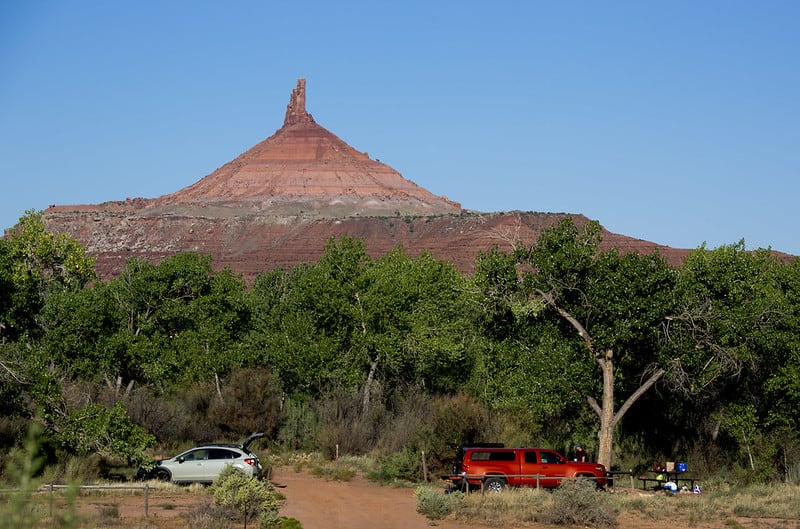
Come see what all the fuss is about. Bears Ears is one of the newest National Monuments in the US, created in 2016. It comprises two districts – Indian Creek, which features some of the best rock climbing in the US, and Shash Jaa, which is rich in ancient culture and artifacts. The area is a broad, peaceful landscape with lots of hidden gems to discover.
#6 – La Sal National Forest
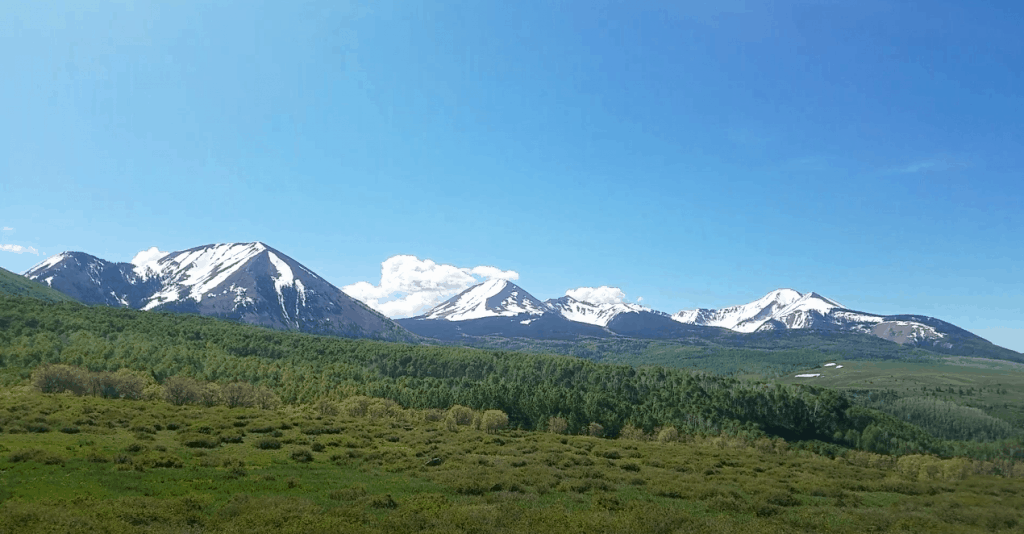
The La Sal mountains are located east of Moab, and are some of the most rugged peaks in the state. There are plenty of opportunities for car camping and backpacking in the range, with tremendous views of the expansive red rock desert and canyon country to the west. The area is also ripe with dinosaur fossils and tracks. It’s an interesting sidestep from what you typically see in the desert, which makes it all the more striking.
Best RV Getaway Locations
#1 – Lake Powell

Lake Powell is one-of-a-kind. It was formed by the creation of the Glen Canyon Dam, filling in part of the canyon carved out by the Colorado River. There are hundreds of twists, turns, and side canyons to explore, and plenty of room for wakeboarding, waterskiing, and the like. You can set your trailer or RV up on the shore and spend all day, or a weekend, or a week, exploring and soaking it all up.
#2 – Bear Lake (Bear River Mountains)

Located in the northernmost-east corner of the state, Bear Lake sits on the border between Idaho and Utah in the Bear River Mountains. It’s a huge body of water rimmed by peaceful forested hills. Bear Lake is a great getaway for anyone trying to appreciate nature without getting too far from civilization. Be sure to ask a local about the infamous Bear Lake Monster!
#3 – Little Sahara

Little Sahara Recreation Area is a classic spot for those who love dirt bikes, ATV’s, and dune buggies. Dunes stretch for miles over the horizon, giving you all the wide open space you’d ever want. Rip around the sand all day, and enjoy warm desert nights around the fire. This is a motorhead’s dream playground.
Flaming Gorge (Uinta Mountains)
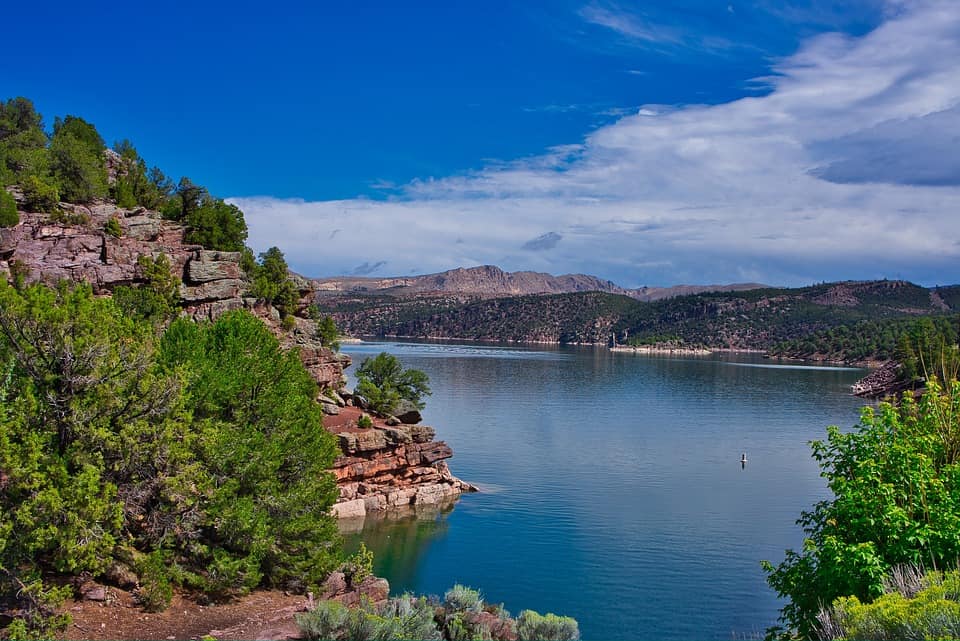
Flaming Gorge is most easily accessed via Wyoming, as it sits to the north of the Uinta Mountains. It’s popular among boaters and RV campers, with lots of facilities available. There is also a ton of room to spread out, as the lake has many inlets and small coves to set up camp in. You can wakeboard, go cliff diving, or just lounge and sunbathe to your heart’s content, with all the comforts of home.
Best Free Camping Locations
#1 – The San Rafael Swell
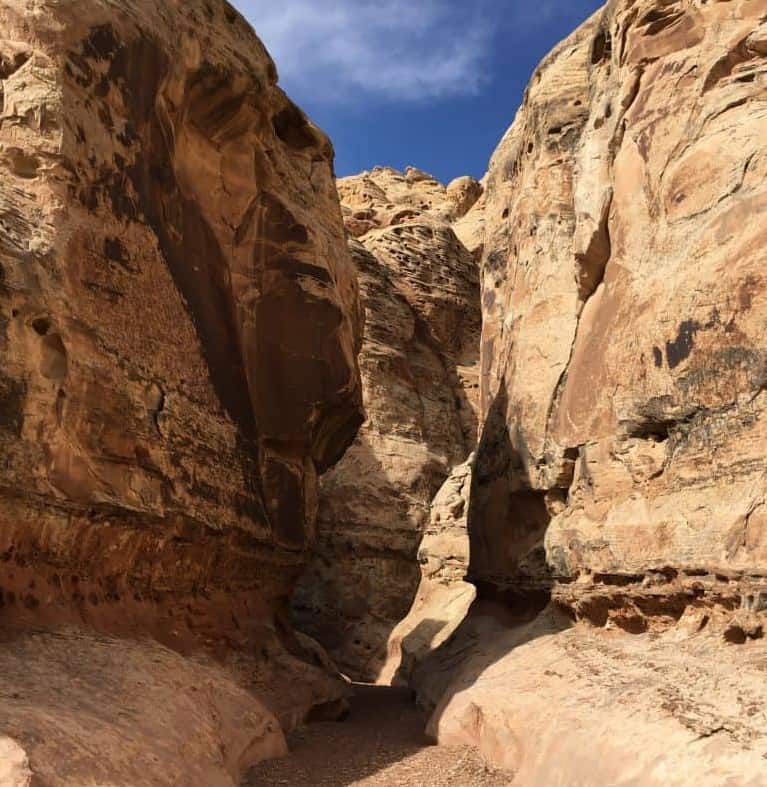
The San Rafael Swell is a diamond in the rough. It’s located west of Green River, and offers some of the best dispersed camping in the state. The Swell itself is a 75-mile-long sandstone uplift full of slot canyons, rock art, and tremendous sandstone formations. Though supplies are remote, if you pack in what you need, you’ll have no shortage of things to do and incredible sights to see.
#2 – Escalante

Grand Staircase-Escalante National Monument is a desert paradise roughly the size of Delaware. It drops through layers of the earth’s crust in steps, exposing different strata of sandstone and unique rock formations. You will see a cross section of every reason to love the desert here. Dispersed camping sites are everywhere, as is adventure.
#3 – Bear River Mountains

Utah is known for its stoic, jagged peaks. But you won’t often hear people talk about the Bear Rivers. Located north of the Wasatch range, the Bear Rivers feature some of the best limestone climbing in the country, lush, green canyons, and charismatic wildlife. There is dispersed camping available throughout the range for those wanting to try something a little different and venture off the beaten path.
#4 – Muley Point (Cedar Mesa)

Muley Point is the definition of a scenic overlook. It’s situated at the southern edge of Cedar Mesa, south of Bears Ears, on top of massive cliffs. Far below is the San Juan river to the south, and beyond that Monument Valley, one of the most picturesque drives in the country. To the east is the Valley of the Gods, also a contender. If you’re road tripping the southwest and want to be absolutely blown away by the size and scale of the landscape, do yourself a favor and make a stop here.
Best Paid Camping Locations
National Parks
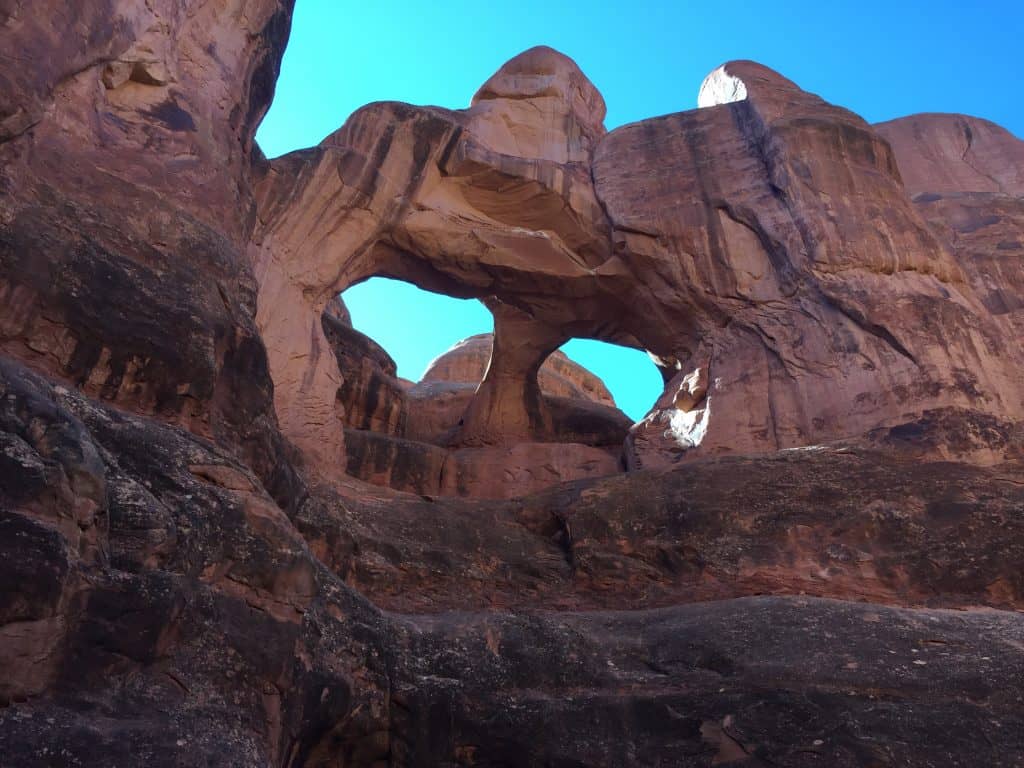
Skull Arch, Arches National Park. Photo credit Conrad Lucas @drinkfluoride
Often referred to simply as “The Big Five,” Utah’s National Parks are always worth the money. Just outside Moab, Arches is home to the highest concentration of natural arches on earth. Canyonlands, located further west is a labyrinth of canyon country intersected by the Green and Colorado Rivers. Bryce, the smallest of them, will leave you awestruck as you hike through a jungle of sandstone hoodoos.
Zion, more than just a scenic drive, contains some of the most incredible cliffs and overlooks in the state. And Capitol Reef, with its impressive domes of rock, has just as much natural splendor as the others, with far fewer crowds. The campgrounds themselves are well-maintained, and there is always something to be said for waking up right in front of your destination.
State Parks
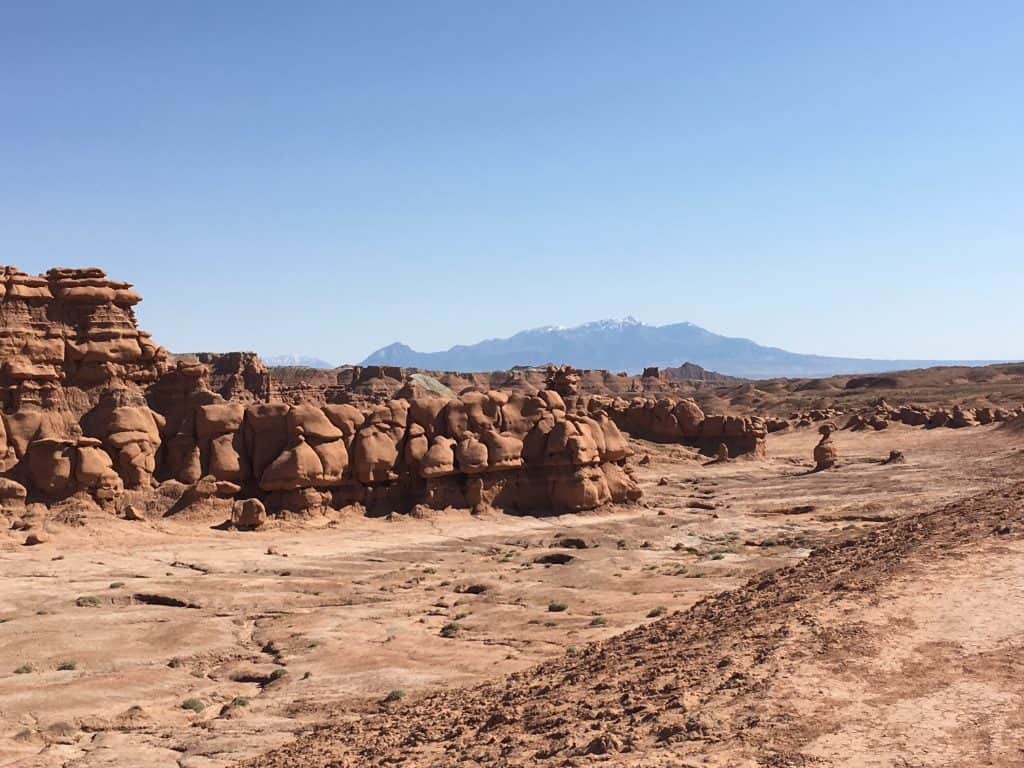
Valley 1, Goblin Valley State Park. Photo credit Conrad Lucas @drinkfluoride
Utah has a variety of State Parks, all worthy of praise, but there are a few that stand out for their uniqueness. First is Goblin Valley, found at the southern tip of the San Rafael Swell. It’s a forest of mushroom-shaped rocks that must be seen to be believed. Second, Deadhorse Point, is a scenic overlook just outside the north entrance to Canyonlands. The views of the valley here are tremendous.
And last is Kodachrome Basin, an isolated, inspiring valley of sedimentary “pipe” rock formations. It’s a great destination for seeing something totally new, and getting well away from crowds. State Park campgrounds are always held to a high standard, and can put you right at the center of the action for some of the best-kept secrets in the state.
Best Backpacking Trips
Before you set out to backpack Utah, be sure and check out our article on backpacking essential knowledge here.
#1 – Coyote Gulch (Grand Staircase-Escalante National Monument)
Coyote Gulch is a classic backpack through the remote desert of Escalante. It’s a total of 28.4 miles, which can take anywhere from two to four days. Coyote Gulch is an epic voyage through canyon country, with nearly constant access to water. It’s rated as moderately difficult, but with substantial payoffs. The rock walls of the canyon are spectacular, but also on display are waterfalls, natural bridges, and Stevens Arch, one of the largest in the world. It’s a perfect trip for hot summer days through the heart of Utah’s red rock country.
#2 – Mount Timpanogos (Wasatch Mountains)

Timpanogos is the second highest peak in the Wasatch range at 11,752 feet. The trail to the summit can be done a number of ways, all of which are worth the trek. The trail is 15.6 miles in total and is usually done as an overnight, with a basecamp in the Timpanogos Basin. Gaining 5,383 feet in total, the hike is rated as difficult. But it’s a feat worth attempting.
Dogs and horses are welcome on the trail as well, and many choose to bring stock along or ride the first day up the mountain. If you’re thinking about bringing your dog hiking or backpacking, make sure you check our ultimate guide.
#3 – Lathrop Canyon (Canyonlands)

The Lathrop Canyon Trail begins in the Island in The Sky district of Canyonlands, at the top of a wide plateau. It then descends precariously nearly 2,000 feet to the White Rim Road. Backpackers can then hike along the Lathrop Road all the way to the Colorado River. The trail is a 19.4 mile out-and-back with a huge elevation gradient, generally done in two or three days. The scenery is impressive throughout, and gives a sense of the scale of the landscape as you inch closer to the river over the first day and a half.
#4 – Kings Peak (Uinta Mountains)

Kings is the highest mountain in Utah at 13,527 feet. The approach to the summit has multiple routes, which vary greatly in terms of commitment. The easiest is the north approach via Henry’s Fork, which can take three days. The south approach from Swift Creek can take five. And the Uinta River trail, which is rarely attempted, can take four.
Each approach has its merits, but none of them will let you down. The area surrounding Kings is an alpine wonderland of open, grassy fields and coniferous forest. Kings is a trying objective with massive payoffs. Make the trip, go the distance, return victorious.
#5 – Red Castle Lake (Uinta Mountains)
Red Castle is one of the many remote, and truly stunning peaks tucked away in the Uinta range. Backpacking it can take two to three days over 20 miles. It’s a fairly level trail, gaining only 1,400 feet or so in total. The peak itself is a standout. It lives up to its name perfectly, surrounded on all sides by spires of rock. The lake itself is photogenic, clear, and cold. If you want to venture deep into the Uinta backcountry, this one is for you.
#6 – West Rim Trail (Zion NP)

The West Rim of Zion is an arduous 14 miles, and can be done one way with a shuttle or as a loop. There are nine campsites available along the trail, and three springs for collecting water. Trekking over the rim above Zion gives gorgeous views of the valley and is one of the best hikes in the park.
#7 – Ibantik Lake (Uinta Mountains)

Ibantik Lake is a superb option for those looking to backpack to a tranquil alpine lake without committing to more than an overnight. The trail is a 7.7 mile out and back, gaining just over 1,000 feet throughout. The lake is overlooked by Notch Peak, a craggy knob of loose rock. There are abundant wildlife in the area as well, including mountain goats. It’s an easily accessible piece of the wild west, and you can even bring your dog.
Now go forth.
Utah has more potential for adventure than we could ever hope to sum up in one article. The variety of options you’ll encounter is rivaled only by the spectacle of the state’s natural beauty. No matter what you’re in the mood for, Utah will always have just the thing for you.
- What is Dry Camping? A Beginner’s Guide - November 19, 2022
- Where You Can Camp at Sequoia National Park - November 19, 2022
- 5 Best Fishing Bobbers & When To Use One - March 14, 2021




